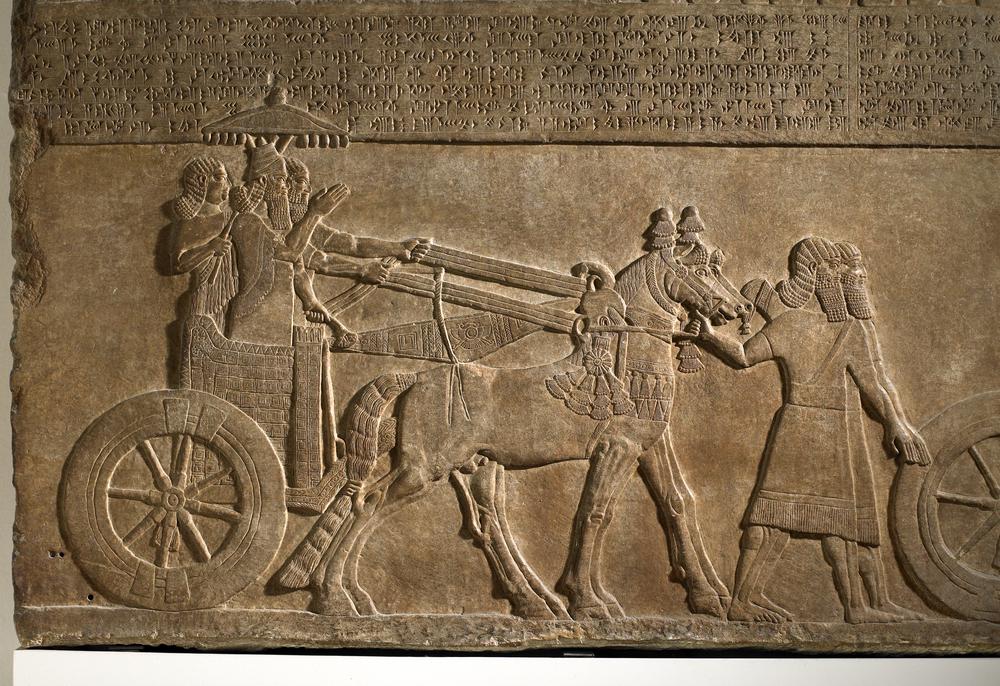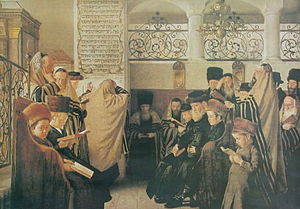When my daughter was in third or fourth grade in an ultra-orthodox school, she told me of an interesting exchange she had with her Humash teacher. The teacher spoke about the survivor who escaped the war in which Lot, Abraham’s nephew, was captured, and said that it was Og the king of Bashan. Og is first mentioned by name in the Torah in the book of Numbers (21:33) as one who wages war against Moshe. In Deuteronomy (3:10-11) he is described as the last of the Rephaim, a gigantic people who once lived in the Cisjordan. The Torah also describes his bed as nine feet long, which would make Og about 8.5 feet tall, extraordinary yet not impossible. My daughter’s teacher, however, explained that Og was of gigantic proportions, and that when Moshe went to war against him, he had to jump ten feet in the air, and with a ten feet long ax, hit Og’s ankle.
On top of that, the teacher explained, according to a Midrash, that Og was the ultimate survivor. He survived the flood by sitting on the roof of Noah’s ark, and he survived the very first World War, which involved nine kings and many nationalities. He also lived long enough to rule the Bashan at the time of Moshe, only to lose his life at the war against the Israelites. This story sounds fantastic, and indeed, following the Torah’s timetable, it would make Og one of the longest living people in history. The flood happened in the year 1656 after the creation of Adam, so even if we assume that Og was but a baby back then, he would be 852 years old at the time of his last battle.
It is hard to accept all these details, which suggest that not only was Og a giant of mythical proportions and of a life-span that the Torah does not mention, but that he was able to trick God and survive the flood by hitching a ride on the ark. But this is not what bothered my daughter. The teacher also said that Og reported to Abraham that his nephew was captured because he hoped that Abraham will die trying to save Lot, and then Og will be free to marry Sarah. Yes, this is also an idea mentioned in Midrashic literature and repeated by Rashi. It makes little sense, because Sarah was taken from Abraham by both Pharaoh and Abimelech, and Og could have done the same exact thing, especially with his powerful and intimidating stature. Yet that was not my daughter’s concern, as she was focused on more practical terms. How could Og even think of marrying Sarah, she asked the teacher, if he was a giant. The teacher, not losing a heartbeat, answered that Abraham and Sarah were also gigantic, and that was too much for my daughter. Now she was asking me to explain how did people in the Book of Genesis interact with each other, and who was or was not a giant.
I told my daughter that the Midrash was not to be taken literally, and that the Torah deliberately kept the identity of the survivor hidden because he is only a tool and not a main character in the story. Since the ultra-orthodox school was the only option we had at the time, I dismissed the incident as part of the culture of treating Midrashic texts and Rashi’s commentary as part of the revelation at Sinai, and I knew there was no point in talking to the teachers or administration about it. I have decided to return to this matter now, because I hear daily of teachers in modern orthodox schools who use Midrashic material inappropriately or where it is not necessary. That is so pervasive, that even those who want to adhere to the biblical text and logical commentaries face difficulties. Just last a teacher told me that her students asked her why didn’t she say that the survivor was Og the King of Bashan. She had to defend her position (to second graders!!!) by explaining that she is following the biblical text.
Let us start by asking this question: how was the identity of the survivor determined? The answer is that Rabbi Yohanan, the author of the statement that the survivor was Og, put together several verses, which are not necessarily related. In Genesis 14:5 we read of a war waged against the Rephaim; In 14:13 the survivor is mentioned; And in Deuteronomy 3:11 it is written that Og was the last remnant of the Rephaim. The conclusion that Og is the survivor is farfetched and unsubstantiated. Deuteronomy speaks of Og as the last remnant of a nation that has slowly disappeared and not as a survivor of a war, and a close reading of Genesis reveals that the survivor could not have come from the battle against Rephaim. That is because the military campaign of the four Mesopotamian kings waged wars against many nations before attacking Lot’s city of Sodom. They fought with the Rephaim, the Zoozim, the Emim, and the Horites on the other side of the Jordan. Then they crossed the river and fought a wide-spread war with the nomad nation of Amalek, then with the Emorites who lived near Ein Gedi, and only after six battles arrived at Sodom and captured Lot. There is no logic in claiming that a survivor from the first battle, remote in both space and time, will be the one to notify Abraham about the events of the last battle.
The problems with the verses on which the identification of the survivor with Og relies, as well as the questions raised before about a lifespan not mentioned in the Torah, the idea that Og tricked God and survived the flood, and the fact that the Torah does not make that statement anywhere, force us to ask a different question: what was the purpose, or the agenda, of Rabi Yohanan? To this, we can offer two answers, one specific and one general. The notion of a powerful, gigantic being, who tries to steal the wife of a defenseless Jew was all too familiar to Jews under Greek and Roman rule, and it was an uplifting message to hear that no matter how hard Og tried and how long he survived, at the end he was defeated by Moshe. Moshe is the greatest prophet and the conduit of the Divine word to the people, and when the Midrash makes him jump and hit Og’s ankle, it symbolizes the power of spirituality to cause the feet and the pillars of the mightiest to buckle and fall.
In the wider context, the identification of the survivor with Og is part of the Midrashic discipline, which does not like anonymous people or unidentified places. The Midrash also likes to merge two names into one person, thus creating more information for each. The motivation of the rabbis to engage in such practice was in large measure a reaction to Greek culture. Greek folktales, such as the Iliad and the Odyssey, were meticulously detailed, and Jews who were exposed to these works expected similar detail in the Torah. The rabbis responded to the demand by expanding and embellishing the biblical narrative, filling in the gaps, adding biographical and historical details, and yes, identifying the anonymous.
There are numerous instances of such practice in Midrashic literature, most of which present tremendous textual and logical problems. For now, though, here is a brief list of such examples from Rashi’s commentary on Genesis [the biblical text is in bold]:
Gen. 2:11: Pishon [one of the rivers of Eden] is the River Nile; 4:22: The daughter of Lemekh, Naama, is the wife of Noah; 6:4: The people of renown are Irad, Mehuyael, and Metushael; 10:2: The nation of Tiras is Persia; 11:29: Yiska is Sarah; 14:1 Amrafel is Nimrod; 14:13: The survivor is Og; 14:18 Melchizedek is Shem; 16:1: The Egyptian maidservant – she was the daughter of Pharaoh; 25:1: Qeturah is Hagar; 28:11: The place is Mount Moriah; 36:43: A man fought with him – it was Magdiel, the angel in charge of Esau; 37:15: A man found him – it was Gabriel; 38:24: Tamar was the daughter of Shem; 41:45: Poti-Phera is Potiphar; 42:23: The translator – it was Menashe; 42:27: One of the brothers – Levi; 46:7 His granddaughters – Serah and Yokheved; 46:10: The son of the Canaanite woman – this is Dinah; 48:1: The messenger told Yosef – it was Ephraim;
There are hundreds more examples in Midrashic literature, many of which contradict each other or the bible itself. That, and the sheer quantity of examples from Rashi’s commentary alone, prove that the practice of identifying and merging people and places became sort of a literary genre. As such, we have to be extremely careful in our choice of commentaries and rabbinic literature. We should examine the textual prove and put the interpretation to the test of reason and logic. By teaching our children ideas that are contradictory to the narrative of the Torah, when we cast logic aside, and when we insist that every word of the rabbis is tantamount to prophecy, we are risking a loss of faith among intellectual people.
The survivor? No one knows his name! He was just the messenger.









Parashat Behar – Weekday Torah Reading (Moroccan TeAmim)